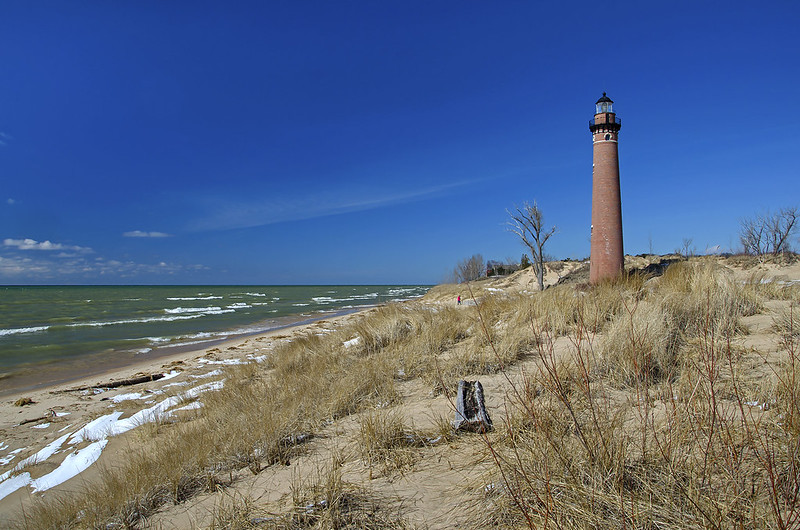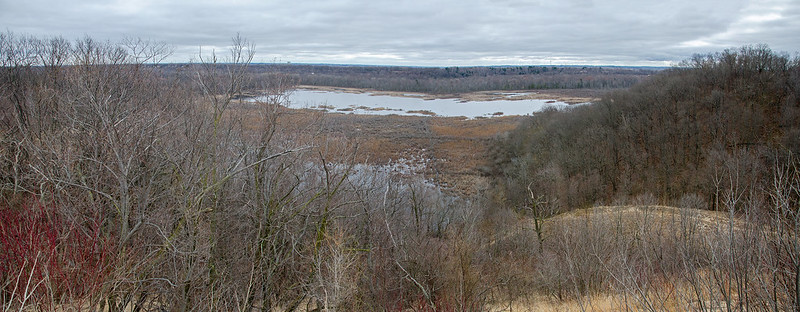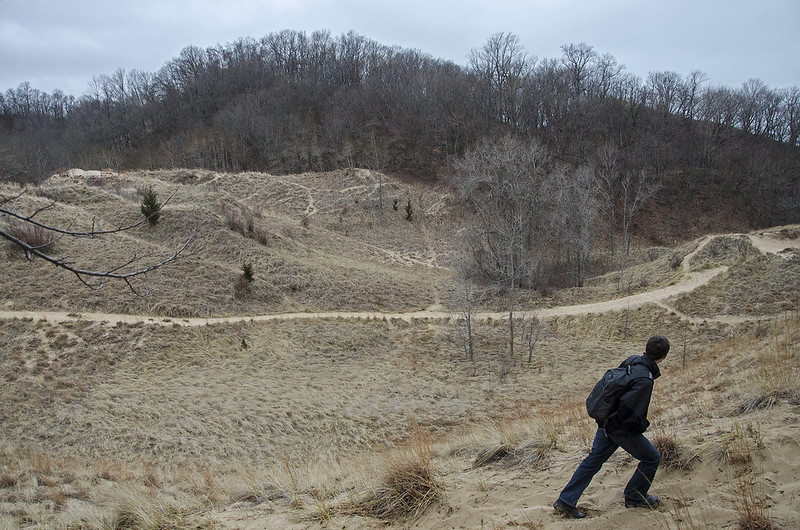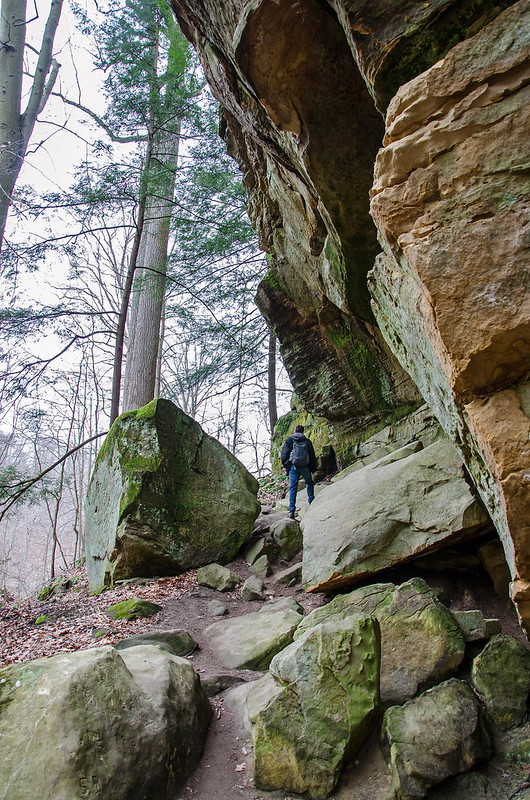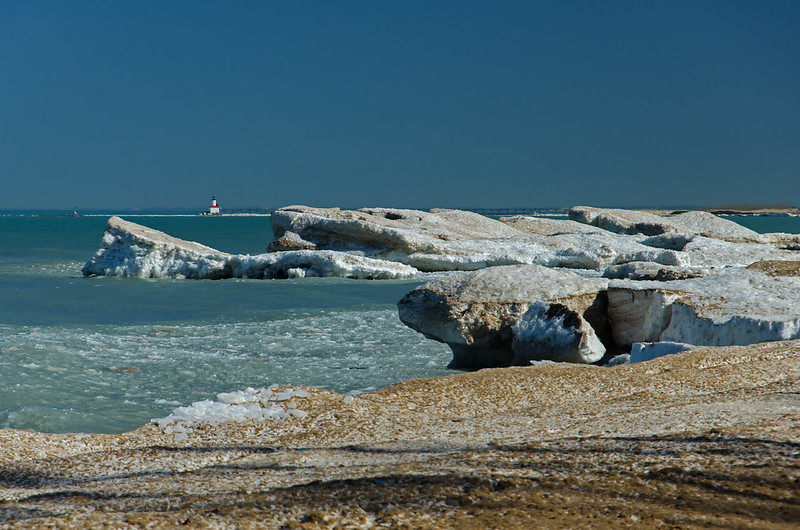
Hiking the vast Silver Lake State Park dunes, we encountered so many interesting things, and ghost trees were among them. Located about half way through our journey to Lake Michigan, the remains of a small stand of trees came into view. Probably buried in sand hundreds of years ago, they've been uncovered again by the same force that buried them.

Upon close investigation, the remains are filled with interesting texture, probably created by insects, animals, and the fact they were underground for so long. One of the taller ghost trees served multiple purposes for us during our hike. It was like a sign post, or milemarker, since we could see it from a long distance away. And when Chris climbed up, he managed to get a great view of what was ahead for us.

The expanse of dunes was unlike any we've visited along the shores of Lake Michigan. To give an idea of the size of the place, the photo above shows two hikers in the distance. At the center of the image, on the horizon, is a small dot. This dot is actually two hikers, and the photo below shows them up close. In this image, we were almost half way to Lake Michigan, looking back to the trailhead and parking area. These hikers are about half way between us and the parking area.

Certainly a great place to hike in a dune landscape.











